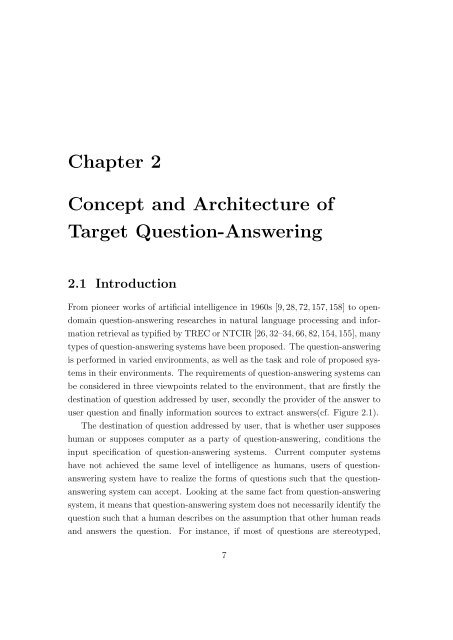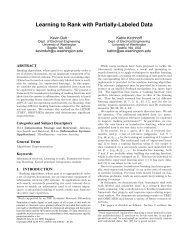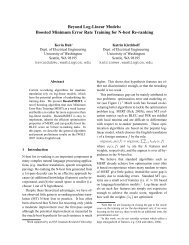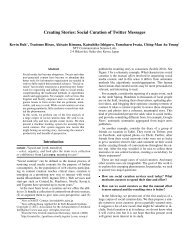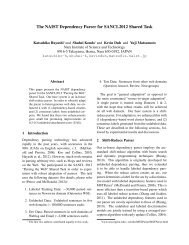file - ChaSen - 奈良先端科学技術大学院大学
file - ChaSen - 奈良先端科学技術大学院大学
file - ChaSen - 奈良先端科学技術大学院大学
- No tags were found...
Create successful ePaper yourself
Turn your PDF publications into a flip-book with our unique Google optimized e-Paper software.
Chapter 2Concept and Architecture ofTarget Question-Answering2.1 IntroductionFrom pioneer works of artificial intelligence in 1960s [9, 28, 72, 157, 158] to opendomainquestion-answering researches in natural language processing and informationretrieval as typified by TREC or NTCIR [26, 32–34, 66, 82, 154, 155], manytypes of question-answering systems have been proposed. The question-answeringis performed in varied environments, as well as the task and role of proposed systemsin their environments. The requirements of question-answering systems canbe considered in three viewpoints related to the environment, that are firstly thedestination of question addressed by user, secondly the provider of the answer touser question and finally information sources to extract answers(cf. Figure 2.1).The destination of question addressed by user, that is whether user supposeshuman or supposes computer as a party of question-answering, conditions theinput specification of question-answering systems. Current computer systemshave not achieved the same level of intelligence as humans, users of questionansweringsystem have to realize the forms of questions such that the questionansweringsystem can accept. Looking at the same fact from question-answeringsystem, it means that question-answering system does not necessarily identify thequestion such that a human describes on the assumption that other human readsand answers the question. For instance, if most of questions are stereotyped,7


